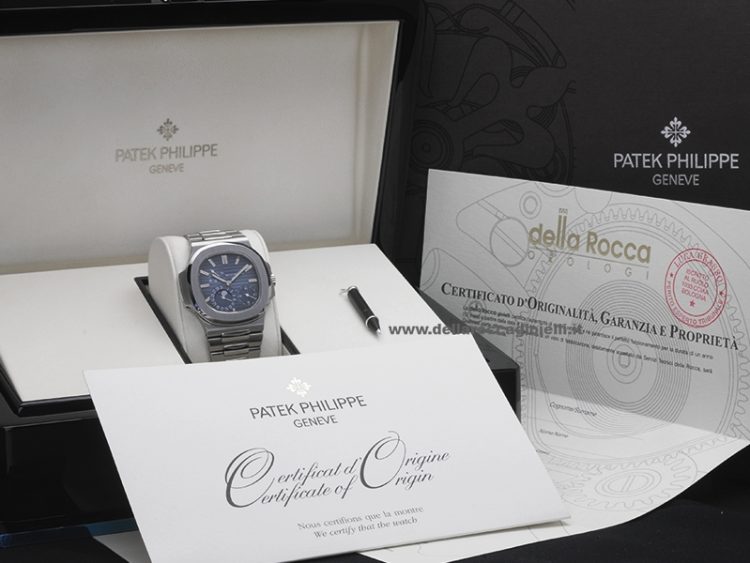Introduction
Omega and Patek Philippe are two of the most iconic and prestigious watch brands in the world. Each has a distinct heritage, rooted in rich history and a commitment to precision, innovation, and craftsmanship. However, when it comes to cultural influence and impact on the watch industry, the two brands have made their mark in different yet profound ways. From Omega’s association with historic events like the moon landing to Patek Philippe’s unparalleled status as a symbol of luxury and tradition, these two giants have helped shape not only the world of horology but also broader cultural movements.
This article delves into how Omega and Patek Philippe have influenced watchmaking culture, exploring the ways in which both brands have not only defined their own legacies but also shaped the broader perceptions of luxury, precision, and innovation in the world of fine watchmaking. Through a careful examination of their cultural impact, iconic partnerships, and enduring legacies, we will compare and contrast the lasting influence each brand has had on the global watch industry and beyond.
Chapter 1: Omega’s Cultural Influence
1.1 Omega’s Origins: A Brand Built on Precision and Performance
Founded in 1848 by Louis Brandt in La Chaux-de-Fonds, Switzerland, Omega started as a humble family business. The brand’s early success was based on its ability to create highly accurate timepieces. By the late 19th century, Omega had already earned a reputation for reliable timekeeping, and its watches were used in a variety of fields, from aviation to sporting events.
While Omega’s technological advancements have been pivotal to its growth, the cultural influence of the brand truly skyrocketed in the 20th century with its involvement in some of the most iconic events in history.
1.2 Omega and the Space Race: A Legacy Written in the Stars
Perhaps Omega’s most significant cultural contribution was its role in the space race. In 1969, Omega’s Speedmaster Professional was chosen by NASA to be the official watch of the Apollo missions, including the historic Apollo 11 mission that put humans on the moon. The Omega Speedmaster became the first watch worn on the moon by astronaut Buzz Aldrin, and its legacy as the Moonwatch has endured ever since.
- Cultural Impact: Omega’s connection to space exploration helped cement its status as a symbol of human achievement and exploration. The watch became more than just a timepiece—it was a cultural artifact, representing humanity’s ability to venture beyond the Earth and into the cosmos.
- Enduring Legacy: The Speedmaster’s association with space exploration has made it a cultural icon in its own right, not just for watch collectors but for those who value exploration, adventure, and the spirit of discovery. The Speedmaster remains a symbol of innovation and precision, capturing the essence of a brand that was there when history was made.
1.3 Omega and Sports: A Watch for the Competitive Spirit
Omega’s influence extends well beyond space. The brand has also made significant contributions to the world of sports, particularly in chronometry. Omega has been the official timekeeper of the Olympic Games since 1932, an association that has further enhanced its reputation as the gold standard in precision timing.
- Cultural Impact: Omega’s role as the official timekeeper of the Olympics has made it a fixture in the world of sports. The brand’s watches are associated with athletic achievement, speed, and performance, reinforcing Omega’s image as a brand that is built on precision and endurance.
- Enduring Legacy: Over the decades, Omega has built a strong reputation in the sporting world, especially through its association with high-profile events like the America’s Cup, the Olympics, and Formula 1 racing. The brand’s timepieces are seen as tools that help athletes and adventurers break records and achieve greatness.
1.4 The James Bond Connection: Omega as the Watch of Choice for Super Spies
Another layer of Omega’s cultural influence comes from its longstanding association with the iconic James Bond character. Since 1995, Omega has been the official watch of James Bond, starting with the release of GoldenEye. This partnership positioned Omega watches as not just practical, but also a symbol of sophistication, style, and action.
- Cultural Impact: Omega’s partnership with James Bond helped reinforce its association with both luxury and adventure. The Bond films portray Omega watches as the choice of a modern hero, blending elegance with ruggedness, further amplifying the brand’s appeal to a broader audience.
- Enduring Legacy: Over 25 years of collaboration, Omega has consistently reinforced its image as a watch for the discerning gentleman with a taste for adventure. The Speedmaster and Seamaster models, worn by Bond, have become staples in the brand’s lineup, with collectors and enthusiasts worldwide eager to own a piece of the James Bond legacy.

Chapter 2: Patek Philippe’s Cultural Influence
2.1 Patek Philippe’s Heritage: Crafting Timeless Elegance
Founded in 1839 by Antoine Norbert de Patek and Jean Adrien Philippe, Patek Philippe has long been synonymous with luxury and craftsmanship. The brand’s focus on creating complicated timepieces and masterpieces of horological artistry set it apart as a symbol of wealth, status, and sophistication.
While Omega made its mark with innovation and performance, Patek Philippe’s cultural influence is rooted in its reputation for creating the world’s most exquisite and complicated watches, beloved by connoisseurs and collectors.
2.2 The Iconic Patek Philippe Calatrava: A Symbol of Timeless Luxury
One of the most iconic timepieces produced by Patek Philippe is the Calatrava, which has become a symbol of luxury, elegance, and refinement. The Calatrava’s simple yet sophisticated design has made it one of the most recognizable and revered watches in the world.
- Cultural Impact: The Calatrava is often regarded as the quintessential dress watch, embodying the principles of timeless elegance. Patek Philippe’s emphasis on understated beauty has allowed the brand to dominate the upper echelons of the luxury market, where its watches are often handed down through generations, becoming family heirlooms.
- Enduring Legacy: The Calatrava continues to be a benchmark for luxury watchmaking, influencing not only the design of future luxury watches but also the expectations of those seeking discreet and timeless luxury.
2.3 Patek Philippe’s Grand Complications: A Legacy of Horological Mastery
Patek Philippe is also renowned for creating some of the most complex and advanced mechanical movements in the world. With watches like the Sky Moon Tourbillon and Caliber 89, Patek Philippe has crafted timepieces that represent the height of mechanical engineering and artistic expression.
- Cultural Impact: Patek Philippe’s commitment to grand complications has elevated the brand beyond being a mere manufacturer of watches. The brand has become a symbol of heritage, investment, and exclusive craftsmanship, with each Patek Philippe watch being seen as a work of art. The watches are highly coveted, and owning one is often viewed as a status symbol.
- Enduring Legacy: Patek Philippe’s tradition of crafting masterpieces is unparalleled in the horological world. The company has set standards for craftsmanship, precision, and design, with its timepieces often being passed down through generations, embodying a legacy of luxury that lasts long beyond the wearer’s lifetime.
2.4 Patek Philippe and Philanthropy: Watches for a Greater Cause
Patek Philippe’s cultural influence extends beyond the realm of luxury watches and into the world of philanthropy. The brand has been involved in numerous charitable endeavors, most notably through the Patek Philippe Museum, which preserves the history of horology and showcases the brand’s incredible contributions to the watchmaking world.
- Cultural Impact: Patek Philippe’s philanthropic efforts have positioned the brand as one that cares about preserving culture and heritage while giving back to the community. The brand’s focus on education, preservation, and art has solidified its reputation as a brand that values both material and intellectual legacies.
- Enduring Legacy: Patek Philippe’s charitable initiatives and dedication to sustaining watchmaking history have helped establish the brand as a cultural institution, not just a luxury watchmaker. Owning a Patek Philippe watch is seen not only as a symbol of wealth but also as an acknowledgment of the brand’s contribution to both horology and society.
Chapter 3: Comparing the Cultural Influence of Omega and Patek Philippe
3.1 Omega’s Broad Appeal vs. Patek Philippe’s Elite Status
While both brands have made significant cultural impacts, Omega’s influence is often more widely accessible due to its association with popular culture, sports, and space exploration. Omega has succeeded in cultivating an image of precision and performance across a wide range of audiences, making its timepieces coveted by adventurers, athletes, and collectors alike.
Patek Philippe, by contrast, represents the apex of luxury and exclusivity. The brand’s cultural impact is tied to its status as a symbol of high society, its grand complications, and its close ties to royalty and philanthropy. Patek Philippe’s watches are coveted by a select group of collectors and connoisseurs who seek the highest levels of craftsmanship and timeless beauty.
3.2 Innovation vs. Tradition: The Philosophies of the Two Brands
Omega is a brand built on innovation—whether it’s in the form of the Co-Axial escapement or its Master Chronometer certification. Its culture embraces forward-thinking and precision, appealing to those who seek reliability in their timepieces. Patek Philippe, on the other hand, is steeped in tradition, with a focus on craftsmanship, heritage, and timeless elegance. Its influence comes from its status as the premier brand for collectors who value mechanical mastery over time.
Conclusion
In conclusion, both Omega and Patek Philippe have shaped the culture of watchmaking and left indelible marks on the luxury industry. While Omega’s influence stems from its innovative spirit, adventurous spirit, and broad appeal across a range of industries, Patek Philippe’s legacy is built on its dedication to tradition, exquisite craftsmanship, and elite status. Together, these two brands continue to inspire and shape the world of fine watchmaking, standing as icons of excellence and prestige in their own distinct ways.





































